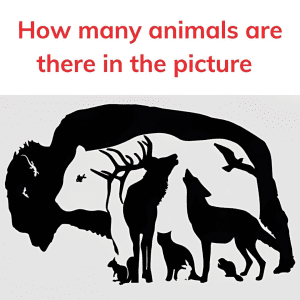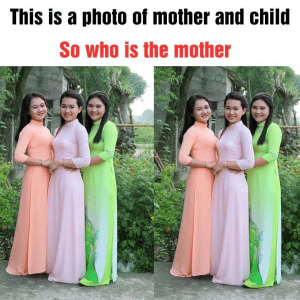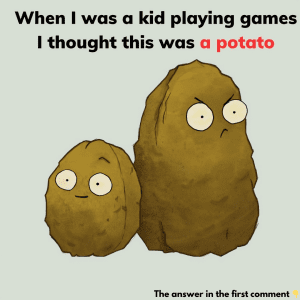Optical illusions are great at challenging our perception and making us look twice. In the image above, a man appears to be in search of something. But did you know there’s actually a hidden bottle cleverly camouflaged within the scene? If you’re up for a challenge, take a closer look and see if you can spot it!
Optical illusions work by playing tricks on our brains, which are naturally inclined to recognize familiar shapes and patterns. Most people will immediately notice the main features in the picture, such as the man, the candle, and the barrels. However, this image has a sneaky surprise that only the sharpest eyes will catch. Let’s explore why illusions like this are so tricky, and I’ll guide you through the process of finding that hidden bottle.

Optical illusions like this one make use of visual misdirection by camouflaging certain objects within a busy scene. Our brains process images quickly, often prioritizing prominent objects and ignoring subtle details. In this illusion, we’re drawn to the man and his surroundings, missing the bottle hidden in plain sight. Here are some reasons people often struggle with illusions like this:
- Focusing on Prominent Details: It’s human nature to focus on the main elements of a scene first. Many people’s eyes go directly to the man’s face or the candle on the barrel, making it easy to overlook other areas.
- Ignoring Shadows and Shapes: Our brains group similar shapes and colors, which can make unusual shadows or shapes harder to detect. The bottle’s shape blends well with the man’s clothing, making it easy to miss.
- Expecting the Obvious: When searching for an object like a bottle, most people expect it to stand out. But this illusion hides it so well that unless you look for irregular patterns, you won’t easily see it.
Now that you understand why this illusion is tricky, let’s walk through the steps to help you find the hidden bottle.
If you haven’t found the bottle yet, don’t worry. Follow these steps to locate it:
Step 1: Take In the Whole Scene
Start by looking at the entire image without focusing on any one detail. Notice the man, the barrels, and other objects around him. Get a feel for the overall layout. Sometimes, just getting familiar with the scene can help you spot unusual shapes or shadows that don’t seem to fit.
Step 2: Shift Your Focus to the Man’s Legs
The bottle isn’t in the background or hidden behind a barrel, as many would guess. Instead, it’s cleverly disguised as part of the man’s clothing. Pay close attention to the area between his legs. Notice any shapes that look a little out of place? By focusing here, you’ll start to see the subtle outline of the bottle.
Step 3: Look for the Bottle’s Outline
Now that you’re zeroed in on the right area, it’s time to pinpoint the bottle. The bottle is positioned vertically on the man’s trousers, blending in with the creases and folds in the fabric. You’ll see a faint, bottle-like shape created by shadows and color changes. It almost appears as if it’s part of the man’s pants, which is why it’s so easy to miss.
Step 4: Confirm the Shape
Once you think you’ve found the bottle, pull back and view the image as a whole again. Look away for a moment, then glance back to see if the bottle shape still stands out to you. It should start to become clearer as you reexamine it. When you can consistently spot the bottle, you’ll know you’ve found it!

The artist behind this illusion did a fantastic job of incorporating the bottle into the man’s clothing, making it nearly indistinguishable from the fabric. By integrating the bottle shape with the folds and colors of the pants, our brains process it as part of the man’s outfit rather than a separate object. Optical illusions like this one challenge us to move beyond our initial impressions and seek out hidden details, encouraging a more thorough and patient approach.
Hidden object illusions rely on two key cognitive processes: pattern recognition and perceptual grouping. Pattern recognition allows us to identify familiar shapes quickly, while perceptual grouping makes us connect similar shapes and colors. In this image, the bottle is strategically placed to blend in with the surrounding shadows and folds, which makes it harder for our brains to distinguish as a separate object.
Optical illusions tap into these cognitive processes to make us see things in unexpected ways. They prompt us to take a fresh look at what might initially seem obvious, training our brains to be more flexible in processing visual information.
Did you spot the bottle right away, or did you have to follow the steps to find it? Many people find optical illusions like this frustrating at first, but once you understand how they work, they’re incredibly rewarding. Share your experience in the comments below—did you find it quickly, or did it take a while? Optical illusions aren’t just entertaining; they also give our brains a workout by making us see things from different perspectives.
Next time you encounter a hidden object puzzle, remember that changing your viewpoint can reveal details that aren’t immediately obvious. These exercises encourage us to pay attention to subtle cues and think outside the box. Who knew something as simple as searching for a bottle could sharpen our perception and challenge our understanding of visual cues?


